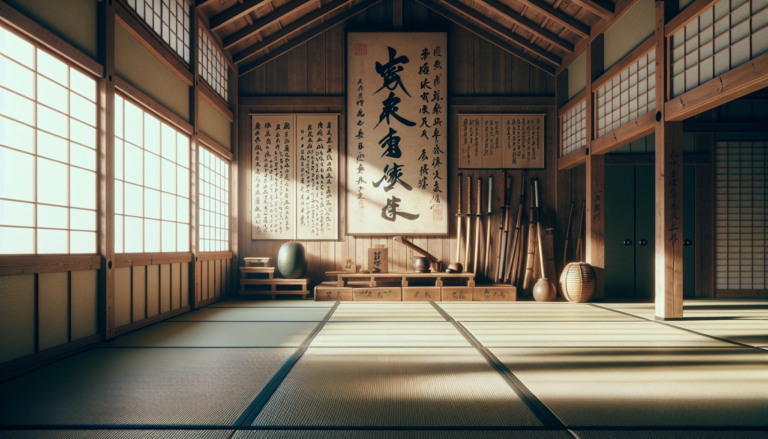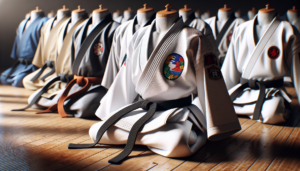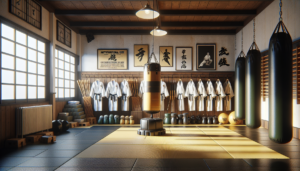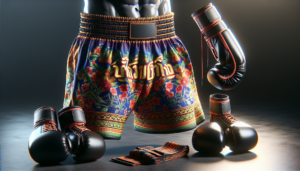Introduction to Aikido Martial Arts
Aikido is a unique martial art that originated in Japan and has gained popularity worldwide. Unlike many other martial arts, Aikido is non-competitive and focuses on self-defense techniques that aim to neutralize an attacker without causing harm. The name “Aikido” translates to “the way of harmonious spirit,” reflecting its philosophy of blending with an opponent’s energy and redirecting it to resolve conflicts peacefully.
Aikido training involves learning a variety of techniques, including joint locks, throws, and strikes, that are designed to control an aggressor’s movements and prevent injury to both the attacker and the defender. By practicing these techniques in a controlled environment, Aikido practitioners develop physical attributes such as balance, timing, endurance, flexibility, and situational awareness.
The Origins of Aikido
Aikido was founded by Morihei Ueshiba, also known as O Sensei, in the early 20th century. Ueshiba had extensive experience in various martial arts, including jujitsu, kendo, and spear fighting. He was particularly influenced by Daito Ryu jujitsu, a traditional Japanese martial art that emphasizes joint locks and throws.
However, Ueshiba’s spiritual beliefs and personal experiences led him to question the violent nature of martial arts. He began to develop a new approach that integrated his martial studies with his philosophical and religious convictions. This new martial art, which he named Aikido, focused on harmonizing with an attacker’s energy rather than meeting force with force.
Philosophy Behind Aikido
At the core of Aikido lies a philosophy of peace and harmony. Ueshiba believed that true victory is not achieved by defeating others but by conquering one’s own aggressive instincts and negative emotions. He taught that the ultimate goal of Aikido is to create a world where people can live in harmony with each other and with nature.
This philosophy is reflected in the concept of The Art of Peace, which emphasizes the importance of controlling aggression without inflicting injury. Aikido practitioners strive to blend with and redirect an attacker’s energy, using techniques that allow them to neutralize threats effectively while minimizing harm to all parties involved.
Core Principles and Techniques of Aikido
Aikido techniques are based on several core principles that differentiate it from other martial arts. These principles include blending with an attacker’s energy, redirecting force, and maintaining control through joint locks and throws. By understanding and applying these principles, Aikido practitioners can effectively defend themselves in a variety of situations.
Blending and Redirecting Energy
One of the most fundamental concepts in Aikido is the idea of blending with an attacker’s energy. Rather than meeting force with force, Aikido practitioners learn to move with the direction of an attack, redirecting the attacker’s momentum and energy to neutralize the threat. This approach allows for a more efficient and effective defense, as it requires less physical strength and effort from the defender.
To blend with an attack, Aikido practitioners use body movements such as entering (irimi) and turning (tenkan) to align themselves with the attacker’s energy. By moving in harmony with the attack, they can control the situation without resorting to aggressive or violent tactics.
Joint Locks and Throws
Aikido employs a wide range of joint locks and throws to control and subdue an attacker. Joint locks involve applying pressure to specific joints, such as the wrist, elbow, or shoulder, to cause pain or discomfort and limit the attacker’s ability to continue their assault. These techniques are designed to be applied gradually, allowing the attacker an opportunity to submit without causing permanent damage.
Throws, on the other hand, involve unbalancing the attacker and guiding them to the ground in a controlled manner. By manipulating the attacker’s center of gravity and using their own momentum against them, Aikido practitioners can execute throws with minimal effort. These techniques are often combined with joint locks to ensure a comprehensive and effective defense.
Breakfalls and Safety
Aikido training places a strong emphasis on safety, both for the practitioner and their training partners. To minimize the risk of injury during practice, Aikido students learn how to perform breakfalls – techniques for falling safely to the ground when thrown. By absorbing the impact of a fall across a larger surface area and slapping the ground to disperse energy, practitioners can reduce the likelihood of serious injury.
In addition to breakfalls, Aikido training is conducted in a controlled environment with close supervision from experienced instructors. Techniques are practiced at a pace that allows for proper form and control, with partners working together to ensure each other’s safety. This collaborative approach fosters trust, respect, and a sense of community among practitioners.
Aikido Training and Practice
Aikido training takes place in a dojo, a dedicated space for practicing the martial art. Training involves a combination of physical techniques, mental discipline, and philosophical study. Through regular practice, Aikido students aim to improve their physical abilities, mental focus, and understanding of the art’s principles.
Training Methods and Routines
A typical Aikido class begins with a warm-up session that includes stretching and basic movements to prepare the body for practice. Students then work on specific techniques, often in pairs, under the guidance of an instructor. These techniques are usually practiced in a controlled, cooperative manner, with partners taking turns as the attacker (uke) and the defender (nage).
As students progress in their training, they learn more advanced techniques and combinations. They also engage in free-style practice (randori), where they face multiple attackers in a more dynamic and unpredictable setting. This type of training helps students develop their situational awareness, reaction time, and ability to adapt techniques to various scenarios.
Benefits of Aikido Training
Regular Aikido practice offers numerous physical and mental benefits. On a physical level, training helps improve balance, coordination, flexibility, and cardiovascular endurance. The constant movement and use of body mechanics in Aikido can also lead to better posture and overall body control.
Mentally, Aikido training promotes calmness, focus, and situational awareness. By learning to remain centered and composed in the face of adversity, practitioners develop greater self-confidence and emotional resilience. The emphasis on peaceful resolution of conflicts can also positively influence one’s approach to challenges in daily life.
Aikido Community and Organizations
Aikido has a thriving global community, with practitioners and dojos located in countries around the world. This community is supported by various organizations that promote the growth and development of Aikido, such as the Aikido Association of America (AAA).
Role of the Aikido Association of America
The AAA was founded by Shihan Fumio Toyoda, a highly respected Aikido teacher known for his dynamic techniques and effective teaching methodology. The organization aims to maintain high-quality Aikido instruction and provide support to affiliated dojos and instructors.
Some of the key functions of the AAA include:
- Providing standardized tests and certifications to ensure consistent teaching and ranking across affiliated dojos
- Organizing seminars, camps, and workshops to facilitate the exchange of knowledge and ideas among practitioners
- Offering resources and guidance to help dojos and instructors improve their teaching and management skills
- Promoting Aikido to the wider public and fostering relationships with other martial arts organizations
By supporting the growth and development of Aikido, the AAA plays a vital role in maintaining the integrity and quality of the art.
Joining the Aikido Community
For those interested in learning Aikido, the first step is to find a local dojo and attend a class. Many dojos offer introductory classes or workshops that provide an overview of the art and its basic techniques. These classes allow prospective students to experience Aikido firsthand and determine if it aligns with their goals and interests.
Once a student decides to pursue Aikido training, they can join a dojo and begin attending regular classes. Over time, they will progress through the ranks, earning promotions based on their skill level and dedication to the art. As they advance in their training, they may also have the opportunity to participate in seminars, workshops, and other events that bring together Aikido practitioners from different dojos and styles.
Affiliation with an organization like the AAA can provide students and dojos with access to a wider network of practitioners, resources, and opportunities for growth. By connecting with the global Aikido community, practitioners can deepen their understanding of the art and its principles, forge lasting friendships, and contribute to the ongoing evolution of Aikido.
Conclusion: The Art of Peace and Self-Defense
Aikido is a unique and powerful martial art that offers a path to self-defense, personal growth, and the cultivation of a peaceful spirit. By blending physical techniques with philosophical principles, Aikido provides practitioners with the tools to protect themselves and others while minimizing harm and promoting harmony.
Through dedicated training and practice, Aikido students develop not only physical skill and strength but also mental clarity, emotional resilience, and a deep respect for the interconnectedness of all beings. As they progress in their journey, they become part of a global community united by a shared commitment to the art and its values.
Whether you are seeking an effective means of self-defense, a way to improve your physical and mental well-being, or a path to personal and spiritual growth, Aikido offers a rich and rewarding experience. By embracing the principles of The Art of Peace and dedicating yourself to the practice of this transformative martial art, you can unlock your full potential and contribute to a more harmonious world.






